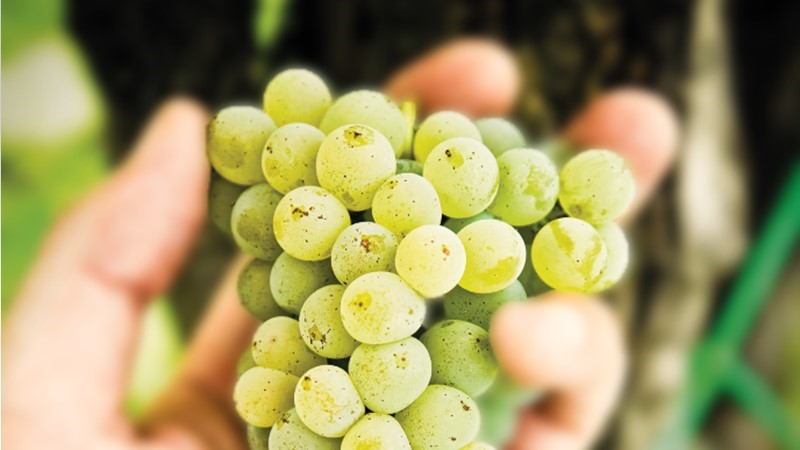
2008 and, boom, out of nowhere in comes Prosecco and, quite literally, consumers just can’t get enough of it. What makes it so special and how has it established itself so quickly in our restaurants, bars and lives? Is it a contender for the royal throne of Champagne? Certainly not. It has a kingdom all of its own, centred around the breathtakingly beautiful towns of Conegliano and Valdobbiadene, at the foothills of the Prealps, in Veneto, Northern Italy.
The key to this wonderful drink lies in its sheer simplicity. Unlike Champagne, Cava and Crémant, the bubbles in Prosecco are a result of secondary (or sometimes primary) fermentation in stainless steel tanks (Charmat method), with the dead yeast cells not desirable in terms of having an effect on the flavour of the wine (autolysis). Prosecco is all about clean, fresh fruit flavours, easy drinking and it’s affordable, which is undoubtedly a huge part of its success. The joy is in its drinkability.
Up until the 1960s the wine was pretty much indistinguishable from the sweet Asti Spumante of Piemonte. Since then, improved production methods and shifting market trends have led to what is now a high standard of sparkling, dry white wine. Since 2009, the name ‘Prosecco’ applies only to the region and the wine produced within it and not to the name of the only grape allowed in its production, a semi-aromatic white grape called Glera (the appellation does not allow for the production of sparkling rosé or red wines, despite popular belief).

Sales outside of Italy, where Prosecco has long been appreciated as an apéritif and social drink, have hit double-digit growth every year since 2008, an incredible trend. The rules and regulations governing its production underwent a major overhaul in 2009.
Until the 2008 vintage, Prosecco was protected as a DOC within Italy, as Prosecco di Conegliano-Valdobbiadene, Prosecco di Conegliano and Prosecco di Valdobbiadene. From 2009, this has been promoted to DOCG status to further protect the name, and an association of traditional Prosecco growers is advocating a protected designation of origin status for Northern Italian Prosecco under European law.
Prosecco DOC Prosecco DOC can be Spumante (fully sparkling), Frizzante (semi-sparkling) and Tranquillo (still). Prosecco DOC Spumante is the most famous and popular variety. Prosecco DOC Frizzante has a light, spritz like fizz. Prosecco DOC Tranquillo is a still wine, with no bubbles and rarely found outside of the region.
Depending on their sweetness, in accordance with the EU sweetness of wine regulations for terms used to indicate sweetness of sparkling wine, Proseccos are labelled “Brut” (up to 12 grams per litre of residual sugar), “Extra Dry” (12–17 g/l) or “Dry” (17–32 g/l). Proseccos labelled with another, non-protected designation, such as “IGT-Veneto”, are generally cheaper and of a more varied quality.
Prosecco Conegliano-Valdobbiadene Superiore DOCG can only be made in the Treviso province of Veneto on the hills between the towns of Conegliano and Valdobbiadene. Producers from Valdobbiadene have recently tended to skip the mention of Conegliano on their front label, calling their wine Valdobbiadene Prosecco Superiore. There is also the smaller Asolo Prosecco Superiore DOCG, produced near the town of Asolo.

While the bulk of Prosecco DOC is grown on low-lying plains in an extended area covering 20,000 hectares, Prosecco Conegliano-Valdobbiadene Superiore DOCG is grown exclusively on hillside vineyards in a far smaller growing area totalling 6,586 hectares. The steepness of the hills of Valdobbiadene means that everything, from pruning to picking, is principally done by hand. The manual aspect, especially for the harvest, further increases quality.
Last year in the UK, sales of Prosecco grew by just over a staggering 50%, both reaffirming our love affair and showing that more and more of us are being introduced to this wonderful drink every day. We’ve seen this before with Pinot Grigio, now showing signs of slowing down in the wake of more complex and interesting wines that are engaging customers and pulling them along to the next stages of their wine journey.
What next for Prosecco – will it challenge the belief, in some circles, that it is limited in what it can produce, stylistically? Let’s face it, there’s a lot of ‘ordinary’ Prosecco around, and whilst this is not a bad thing in itself, the focus of producers now is to show the world that there are differences and to give consumers reasons to stay engaged and to trade up. There are a number of wineries putting energy and focus into quality, not just in terms of the liquid, but also how the product is presented, to make that drinking occasion even more memorable for the consumer.
Matthew Clark is constantly reviewing its Prosecco range and a few, recent additions, have really demonstrated just which direction Prosecco is heading in. Our recent alliance with Bottega combines wines made from premium DOCG fruit with amazing freshness, aroma and clean acidity, with spectacular packaging. The wines are really an extension of the character that created them. Sandro Bottega is someone who lives his life in vivid colour, full of imagination and creativity. His personality is evident in every bottle of wine that his family business produces and the range is set to expand to incorporate new ways of thinking including single vineyard wines and innovative, select parcel blending.

Fantinel, with whom Matthew Clark has a long-standing relationship, have launched a single vineyard wine ‘The One and Only’, a wine awarded a Bronze medal in the Sommelier Awards, which exhibits a depth of flavour that shows the winemaker’s dedication to pushing the boundaries beyond ‘normal’. Rocco strives to use only the best DOCG fruit in their wines, with the popular extra dry style giving a richer and rounder mouthfeel without losing any of the fresh acidity that makes it a standout drink.
Andrea Bocelli’s family have partnered with the Trevisiol family, who have run the longest continuously operating family Estate in Valdobbiadene, to produce a wine lauded by Wine Spectator for its finesse and delicacy. I could go on and on. Ultimately, watch this space. Invest in quality when it comes to Prosecco. Although the entry-level wines are winners, the market is drawn to that enhanced experience. Bottega Gold for a celebration or Rocco for an apéritif.
Perhaps we’ll see some experimentation with bottle fermentation (the DOCG regulations allow for it) in the near future. Maybe additional grape varieties will be introduced and new sites planted. What is certain is that the region is not resting on its success and we’ll continue to see the type of innovation needed to keep this region’s wines at the top of their game.

